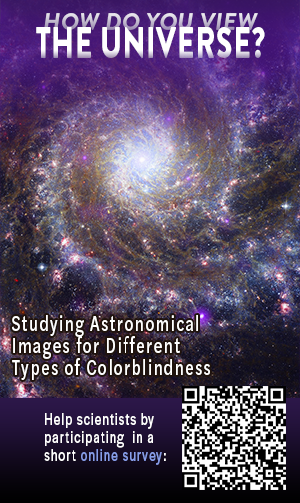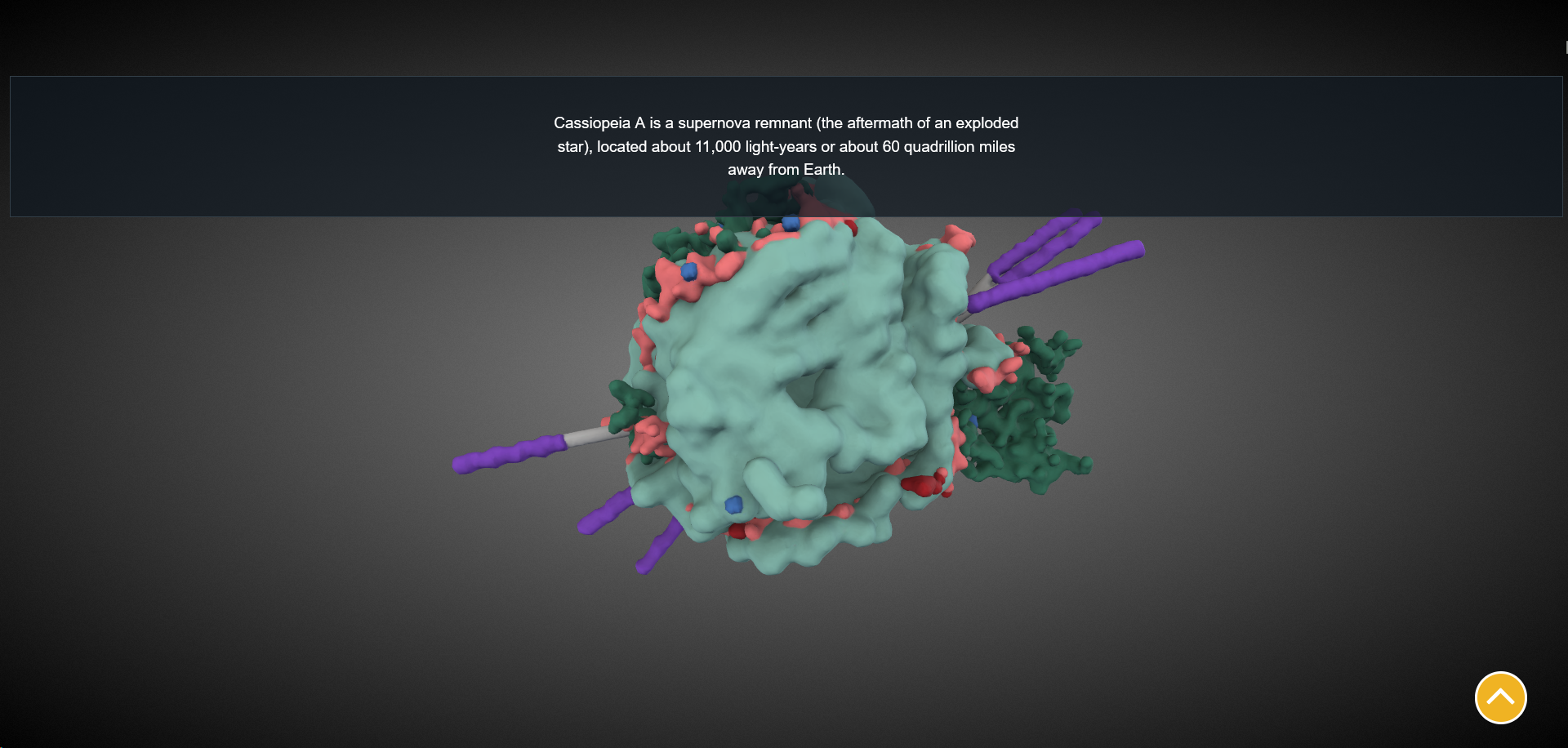The 'Pillars of Creation' Across Light and Time
Submitted by chandra on Fri, 2025-03-28 10:59'Pillars of Creation' Over Time
Credit: 1995: Optical: NASA/ESA/STScI/ASU/J.Hester & P.Scowen; 2015/2018: X-ray: NASA/CXC/INAF/M.Guarcello et al., Optical: NASA/STScI; 2023/2024: X-ray: NASA/CXO/SAO, Infrared: NASA/ESA/CSA/STScI, Image processing: L. Frattare; Sonification: NASA/CXC/SAO/K.Arcand, SYSTEM Sounds (M. Russo, A. Santaguida)

1995 Hubble Space Telescope Image of
the 'Pillars of Creation'
Credit: NASA, ESA, Jeff Hester, and Paul Scowen (Arizona State University)
Nearly 30 years ago, in 1995, NASA’s Hubble Space Telescope captured an image that would become one of the most recognizable in astronomy: towering columns of gas and dust in the Eagle Nebula, sculpted by intense stellar winds and radiation. Dubbed the “Pillars of Creation,” this image reshaped how we visualize star formation, appearing everywhere from textbooks to T-shirts.
But the story of the Pillars didn’t end there. Over the decades, astronomers have returned to this region with Hubble and more telescopes, peeling back new layers of its story. Earlier in its mission, NASA’s Chandra X-ray Observatory looked for the high-energy signatures of young stars inside the Pillars themselves, revealing that massive newborn stars—thought to be actively forming inside the Pillars—were surprisingly absent. This raised the question: are the Pillars past their star-forming prime since young stars are usually strong X-ray sources? Chandra's sharp X-ray vision does allow it to identify hundreds of very young stars in the region and others still in the process of forming (known as "protostars").
A Journey to Becoming a NASA Astronomer
Submitted by chandra on Tue, 2025-03-18 14:43We welcome John ZuHone, an astrophysicist on the Advanced CCD Imaging Survey (ACIS) team at the Chandra X-ray Center, as our guest blogger. Prior to Chandra, he was a postdoctoral researcher at the MIT Kavli Institute, NASA Goddard Space Flight Center, and the Center for Astrophysics | Harvard & Smithsonian. John received his undergraduate degree in physics from the University of Illinois at Urbana-Champaign and his Ph.D. in astronomy and astrophysics from the University of Chicago. His research interests include merging galaxy clusters and the physics of the intracluster medium.
My interest in astronomy started when I was very young. When I began to read, there was one book that was bought for me that I started taking everywhere—My First Book About Space. The pictures of planets, star clusters, and galaxies taken by telescopes and imaged by the first solar system probes launched by NASA captivated me (I still have this book on my shelf, though it’s a little worn out these days). Another book that I read over and over again was The Stars: A New Way to See Them by H. A. Rey, the writer of the Curious George series. Rey was frustrated by how the constellations were drawn in many star charts—they didn’t look anything like the names they were given. So he re-drew the lines—and most of the time, he was able to make it work! To this day, when I look up at a night sky filled with stars, I see the constellations as Rey drew them.
Isaacman Visit to Chandra Operations Control Center
Submitted by chandra on Fri, 2025-01-17 11:17
From left to right: Scott “Kidd” Poteet, Lisa Kewley, Jared Isaacman, Bob Curbeam, Pat Slane
Credit: NASA/CXC/SAO/J.McDowell
Last June, the Chandra X-ray Center had the privilege of welcoming Commander Jared Isaacman to our Operations Control Center (OCC). This facility is Chandra’s “mission control” where engineers and scientists communicate with the telescope and receive its invaluable data.
New Performance Helps Connect Science Through Music
Submitted by chandra on Mon, 2024-12-16 10:55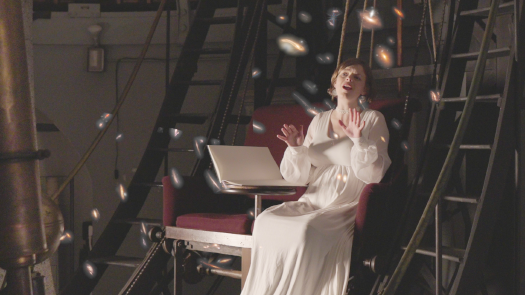
Agnes Coakley Cox, soprano, sings in "Luminosity"
Credit: David Ibbett, Center for Astrophysics | Harvard & Smithsonian (CfA)
A new composition, performed live for the first time on December 14th at the Black Hole Symphony at the Christine McAuliffe Center, is helping people discover science through music.
David Ibbett is Resident Composer at the Center for Astrophysics | Harvard & Smithsonian (CfA), Professor of Music at Worcester Polytechnic Institute, and the Director of Multiverse Concert Series. His new “Voice of the Universe” project uses music to shed light on astrophysical data and images.
The first song to be released, entitled “Luminosity,” was created from the image SMACS 0723 made from data from NASA’s Chandra X-ray Observatory and James Webb Space Telescope. Different parts of the image are sonified in different ways. Sonification is the process of translating astronomical data into sound using scientific and mathematical mapping. This allows humans to engage with data from the cosmos using one of their senses other than sight.
"Above and Beyond" Celebrates Chandra and CfA at the Hirshhorn
Submitted by chandra on Tue, 2024-11-19 08:14A symphonic event at the Smithsonian’s Hirshhorn Museum and Sculpture Garden on November 16th 2024 provided a remarkable opportunity to celebrate 25 years with the Chandra X-ray Observatory on the Mall in Washington, D.C. The free program, entitled "Above and Beyond," was built around Chandra’s milestone anniversary and featured the premiere of "Where Parallel Lines Converge." This original piece by composer Sophie Kastner, created with Chandra and alongside CXC experts, was inspired by the Chandra sonifications of the Galactic Center region. The ensemble musicians were from the 21st Century Consort and their performance was outstanding. In addition to the music, there was a selection of space imagery/video that helped showcase Chandra science. Dr. Kimberly Arcand of the Center for Astrophysics | Harvard & Smithsonian (CfA) was on hand for a special conductor’s discussion and question-and-answer session before the performance along with other invited guests, and there was a brief reception afterwards.
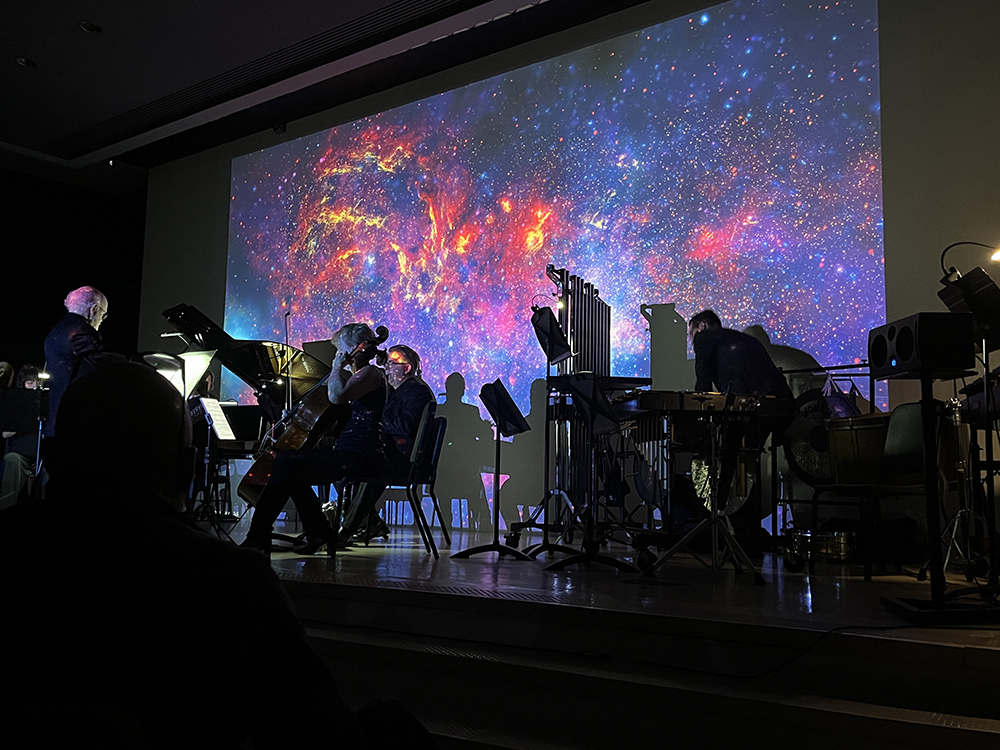
Chandra Documentary Wins Award in Film Festival
Submitted by chandra on Thu, 2024-10-10 08:57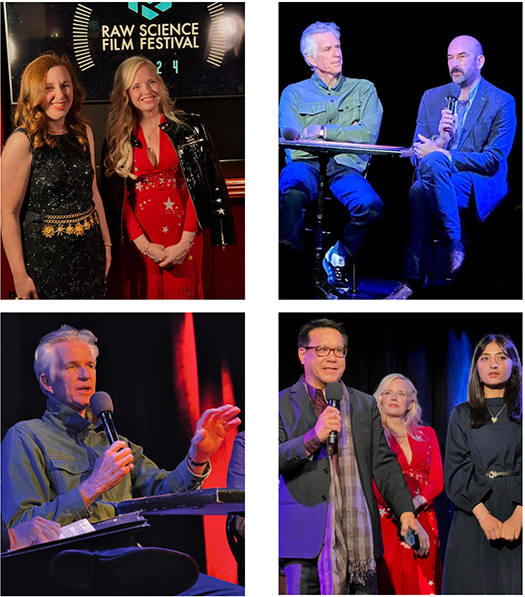
Images from the Raw Science Film Festival Awards Ceremony, featuring
Matthew Modine, Dr. Kim Arcand, Elizabeth Landau, and more.
On Saturday, October 5, the Raw Science Film Festival opened in New York City and the CfA’s Dr. Kimberly Arcand was on hand, along with Elizabeth Landau of NASA HQ, to celebrate the “Listen to the Universe” documentary that won the Industry award for “Best New Media”.
“Listen to the Universe” is a 20-minute documentary produced by the Chandra X-ray Center at the CfA and NASA+ that takes viewers behind the scenes of the team that creates data sonifications.
The Raw Science Film Festival included an awards ceremony featuring a special Q&A with actor/executive producer Matthew Modine, along with screenings and director discussions of "Listen to the Universe" and other selected films. The festival's overall mission is to humanize science and keep fact-based storytelling at the forefront of popular culture.
-Megan Watzke CXC
Participate in New Survey on Color Blindness and Astronomy
Submitted by chandra on Mon, 2024-09-23 10:19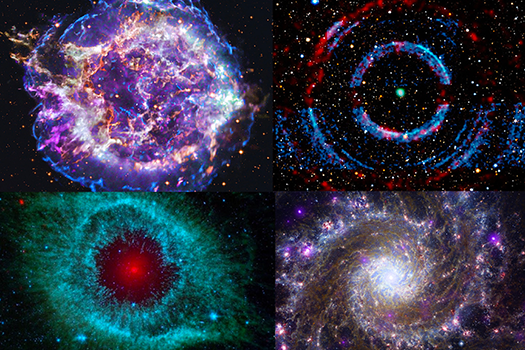
Upper-left: Cassiopeia A; Upper-right: V404 Cygni; Lower-left: Helix Nebula; Lower-right: M74
Credit: NASA/CXC, HST, JWST, SST & Swift
Chandra is committed not only to learning about the Universe, but also to learning about learning about the Universe. Our team have become experts — and partners with others outside of Chandra — on examining how people view and explore space through astronomical data.
Our latest research project involves investigating how people with color blindness experience astronomical images. Please consider taking our survey on this topic. You do not need to have color blindness to participate, but, of course, we are excited to hear from people who do!
The survey is open now. We would greatly appreciate it if you could take the time to fill it out — it’s short! Also, please feel free to share this survey with your family, friends, and colleagues: https://www.surveymonkey.com/r/coloruniverse
Thank you for your help!
Chandra Shows Off its "Scrollytelling"
Submitted by chandra on Thu, 2024-09-05 08:28The Chandra team has been working behind the scenes with the Smithsonian Institution's Digitization 3D Program, to create a new scrolling interactive for Cassiopeia A.
The term "scrollytelling" is real, even if you might not find it in every dictionary. (Though if you look in online ones – especially any that include online terminology – you will.) You may have experienced scrollytelling yourself if you’ve read or explored longer pieces of content on certain platforms or news outlets.
The idea is simple: as you scroll down the page, new information in the form of text, images, and videos will appear. It’s an effective way to convey layers of information, and we’re excited to share this new resource that will let you explore Cassiopeia A in a new way! Cas A, as it’s known, is arguably Chandra's most famous data of a supernova remnant, the leftover material from a star that exploded 340 years ago. Chandra has observed Cas A many times over its 25-year mission, and we have discovered lots about this exploded star -- including how it looks in three dimensions.
Seeing Chandra… From the Ground
Submitted by chandra on Wed, 2024-08-28 17:32It’s been over a quarter of a century since the Space Shuttle Columbia deployed NASA’s Chandra X-ray Observatory into space during mission STS-93. Chandra’s highly elliptical orbit takes it over one-third of the distance to the Moon at its farthest point.
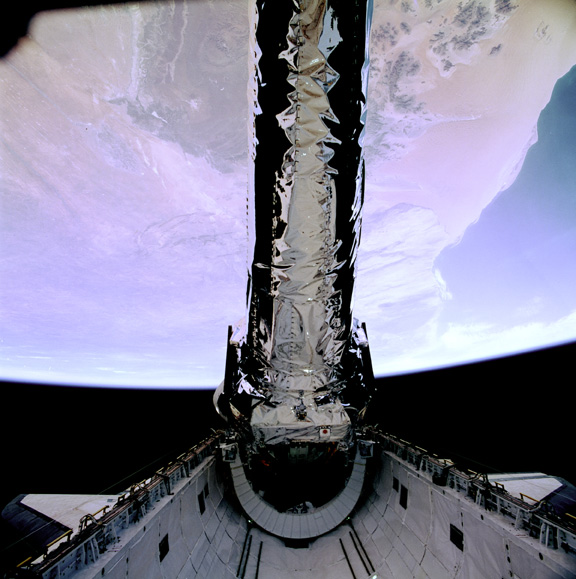
Although Chandra's closest approach to Earth fluctuates extensively with long-term variations in the orbit, it is still typically well more than 600 miles (1000 kilometers) above the surface. Compare that to the International Space Station which orbits our planet at an altitude of about 250 miles, and the Hubble Space Telescope which sits about 320 miles above Earth. It’s clear that Chandra is rather far away from us.
CfA Celebrates Chandra’s 25th Anniversary
Submitted by chandra on Tue, 2024-07-23 15:12Twenty-five years ago, the Space Shuttle Columbia launched into space carrying the Chandra X-ray Observatory. Press releases from the Chandra X-ray Center, CfA, and Smithsonian shared 25 new images with Chandra data to publicize this momentous milestone. A dedicated webpage to Chandra’s 25th birthday, plus the new images and press release, can be found at https://chandra.si.edu/25th/
Pages
Please note this is a moderated blog. No pornography, spam, profanity or discriminatory remarks are allowed. No personal attacks are allowed. Users should stay on topic to keep it relevant for the readers.
Read the privacy statement

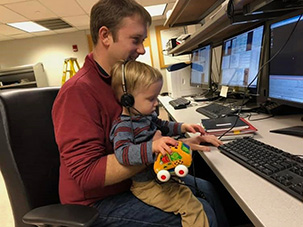

 Watch "Listen to the Universe" on NASA+
Watch "Listen to the Universe" on NASA+